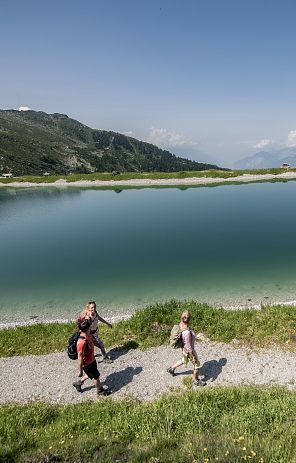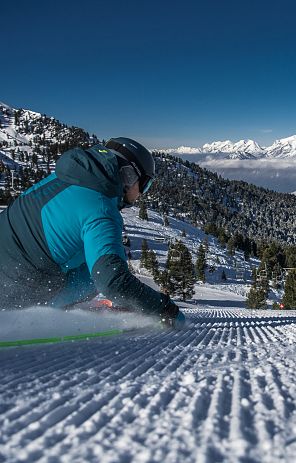Mint Museum Hall. At Hasegg Castle
The Hall Mint Museum is housed in Hasegg Castle. Here you can experience the development of coinage and various minting techniques. The highlight of the Hall Mint is the faithful replica of Tyrol's first roller minting machine (1571). This colossus was considered a technical sensation in the Middle Ages and today stands as a worldwide unique specimen in the same place where its predecessor from the 16th century processed around 4,000 coins a day.
The Mint Tower, the legendary landmark of the town of Hall, can also be visited. There are individual tickets for the museum and tower, as well as a combined ticket for both. Personal guided tours or tours with audio guides are available in various languages.
To top it all off, you can swing the spindle yourself and mint your own personal coin as a small memento of the cradle of the taler and the dollar.
The use of audio guides is included in the admission price. Alternatively, you can navigate through the tour using your own smartphone.
The audio guides are available in German, English, French, Italian, Dutch, Spanish and Japanese. A children's version in German is also available.
Guided tours in the Museum Münze Hall
Personal museum tours are offered by appointment. The maximum size of a group per museum guide is 30 people.
Museum tour per group € 100.00 excluding admission
Your contact person:
Anita Töchterle-Graber
Phone: +43 5223 45544-23
Mail: a.toechterle-graber@hall-wattens.at
History of the castle complex and the mint tower
Hasegg Castle was built to protect the town, the salt works (salt mining), Inn shipping and to monitor the old salt route after the town was raised in 1303. Under Archduke Siegmund the Rich and Emperor Maximilian I, it was expanded into a representative castle.
The famous mint tower of Hasegg Castle is the landmark of the town of Hall. The name Hasegg has evolved over the centuries from the name "Pfannhaus-Eck". Pfannhaus meant the brewhouse of the salt works.
Originally a watchtower, the mint tower was built towards the end of the 15th century. The architecture is late Gothic and a dodecagonal structure on twelve corbels rises above the cylindrical building. This design allows the best views in all directions, including downwards. The tower is 46 meters high and has almost 200 steps. It offers a breathtaking view of the old town of Hall, the Inn Valley and the mighty backdrop of the Karwendel.
The ascent to the legendary Münzerturm is an unforgettable experience: light and sound effects accompany visitors on their way to the top. After the exciting ascent to the tower lantern, further highlights surprise visitors on the descent. The small stair tower impresses with its unique three-flight staircase and as the home of the kestrels. One floor below are the rooms of the city archaeology department, which provides information on the history of Hall as well as everyday life in the Middle Ages. In addition to the exciting falcon area and the city archaeology, you can marvel at the world's largest silver thaler. The famous Europataler is fascinating with a size of 36 cm and a weight of over 20 kg of pure silver.
From the mint to the Münze Hall museum
Time facts at a glance
| 1477 | Archduke Sigismund the Rich moved the provincial mint from Merano to Hall in Tyrol. |
|---|---|
| 1486 | the first silver coin - the first taler - was minted. |
| 1567 | the castle experienced its most significant upswing: Archduke Ferdinand II had the Hall mint moved from the center of Hall, the so-called Sparberegg, to Hasegg Castle. At the same time, the first mechanical minting of coins was carried out using rollers. |
| 1748 - 1768 | the world-famous Maria Theresa taler was minted over 17 million times and used as a means of payment all over the world. |
| 1809 | At the time of the Tyrolean liberation struggle against France, production at the mint was discontinued. |
| 1975 | the Hall Mint was reopened as the "Old Mint" museum and produced a 100 schilling commemorative coin to mark the 1976 Winter Olympics in Innsbruck. |
| 2003 | the museum was completely renovated and renamed "Münze Hall". Since then, the Hall Mint has doubled its exhibition space and added new attractions. Even today, special and commissioned minting is still carried out for companies, events and private celebrations. |
In the vector: Gallery in Hasegg Castle
The contemporary exhibition space "im Vektor" is located in the historic premises of Hasegg Castle. The gallery focuses in particular on paintings, drawings and sculptures, but the annual program also includes installations. A special focus is placed on the young generation of artists in order to promote them through solo exhibitions.



